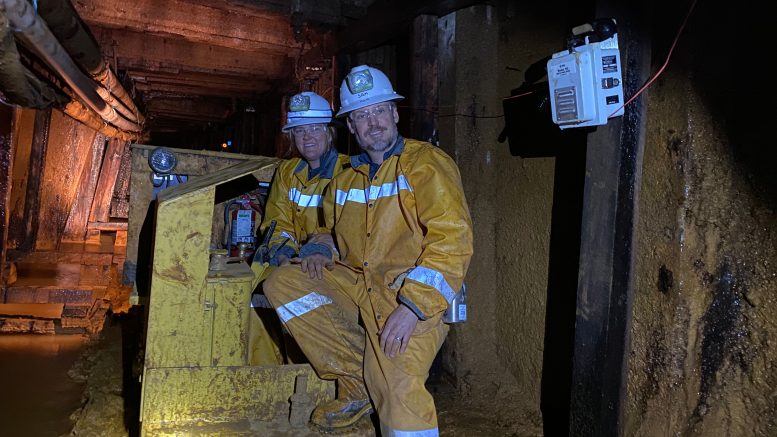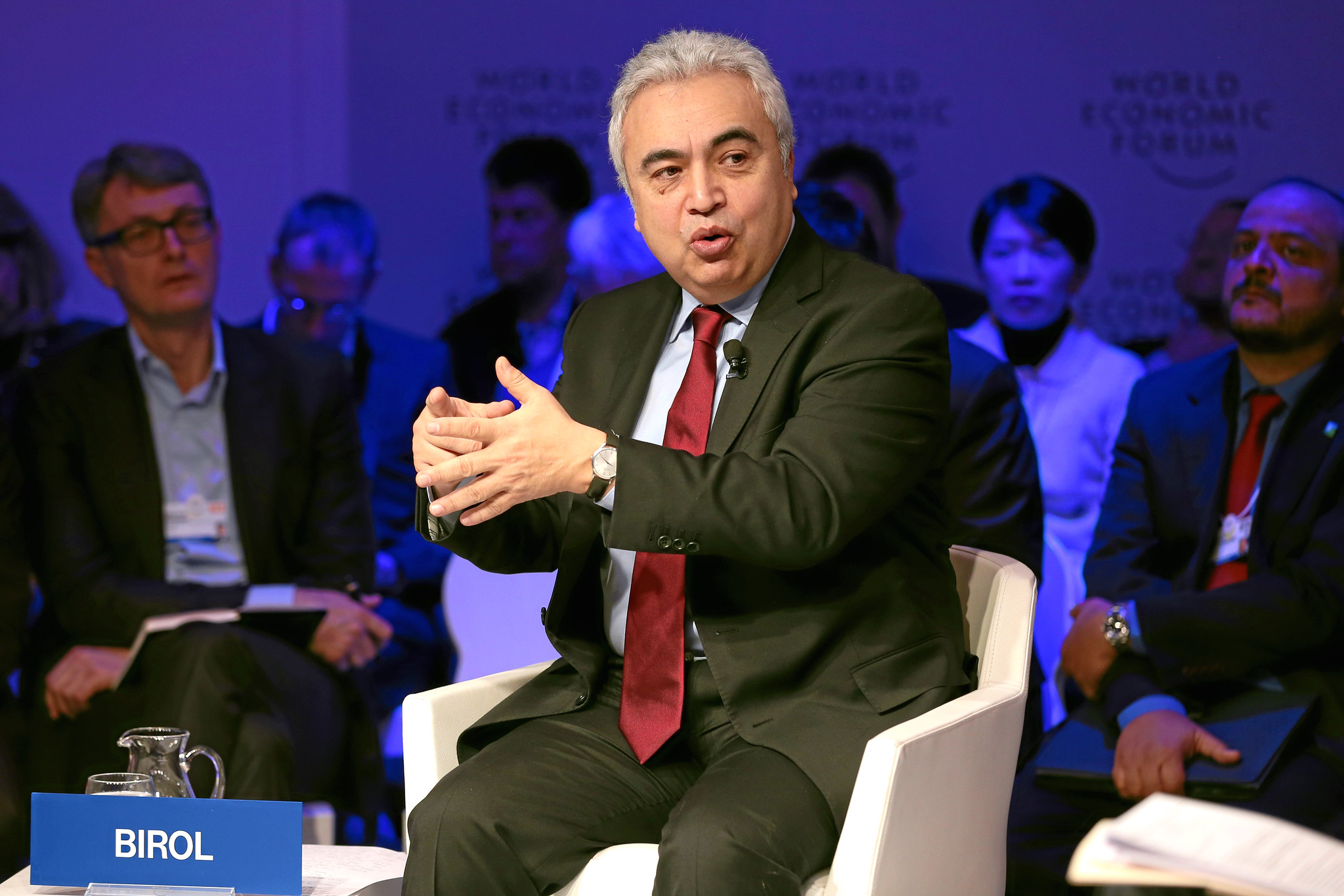New management brings ‘modern thinking’ to environmentally challenged Bunker Hill mine

For over a century, the mines of Silver Valley in the Coeur d’Alene Mountains in northern Idaho have been a source of tremendous mineral wealth.
From the mid-1880s, those mines have yielded almost 10 million tonnes of zinc, lead and silver.
The region’s most famous mine, Bunker Hill, was first discovered in 1885 by Noah Kellogg. (In 1894, the nearby Milo prospecting camp was renamed in his honour, eventually leading to the establishment of Kellogg city.)
Between 1887 and 1981, Bunker Hill was one of the most productive mines in America. The mine and its associated electrolytic zinc processing plant and lead smelter produced over 35 million tonnes of ore concentrate, with an average grade of 8.67% lead, 3.67% zinc, and 171.56 grams silver per tonne, including 165 million oz. silver as a by-product.
However, the mine closed in 1981 due to a combination of low base metal prices and the cost of upgrading its processing and smelting operations to meet new environmental regulations introduced by the U.S. Environmental Protection Agency (EPA).
In 1983, the EPA declared the Bunker Hill mine and smelter complex the country’s second-largest Superfund site. The EPA’s Superfund program is responsible for cleaning up some of the U.S.’s most contaminated land.
Since its closure, the mine has been under care and maintenance. The lead smelter and zinc processing plant have been dismantled, and polluted water discharged from the shuttered mine has been treated by an EPA-run water treatment plant.
In 2018, Bunker Hill Mining (CSE: BNKR; US-OTC: BHLL ), agreed to a deal with Placer Mining, the owners of the mine, as well as the EPA and the U.S. Department of Justice, to operate the mine without “incurring liability for any hazardous substances, pollutants or contaminants that migrated from the mine in the past.”
Under the deal, announced on the last day of the Prospectors & Developers Association of Canada’s annual four-day convention in Toronto, the Canadian-based mining company agreed to pay the EPA US$20 million over seven years for historic water-treatment costs dealing with the mine’s effluent.
On top of its lease-purchase agreement to Placer Mining, the company also agreed to make payments of US$80,000 per month to the EPA to continue running the water-treatment facility.
Later that year, however, the company ran into financial difficulties. And on Oct. 1, after defaulting on US$400,000 in lease payments due at the end of September, the company terminated its lease and option agreement to acquire the mine property and Superfund site.
Under new leadership
In 2019, Bunker Hill Mining set about shoring up its finances and attracting capital investment through a series of equity financing agreements and loan facilities, and on Oct. 22 the company signed an amended lease agreement with an option to purchase the mine.
Under the new agreement, the lease period was extended to Aug. 1, 2020, and the option to purchase was amended providing for a purchase price of US$11 million for 100% of the marketable assets of the mine, consisting of US$6.2 million in cash and US$4.8 million in shares of the company.
Following the deal, the company continued its capital raising efforts, closing several private placements and now has around US$20.4 million in working capital.
In March 2020, Richard Williams, a former COO at Barrick (TSX: ABX; NYSE: GOLD), was appointed to the board of directors and executive chairman of the company.
“I was excited to be joining the team and relished the opportunity to unlock the extraordinary potential of this remarkable asset,” Williams said in an interview. “We plan to verify, explore, and then develop the mine’s untapped high-grade silver potential.”
Around a month after Williams joined, Sam Ash replaced John Ryan as the company’s president and CEO, with Ryan continuing to serve on the company’s board of directors.
“In April, I relocated to northern Idaho to help accelerate our first phase exploration program,” Ash said. “As our understanding of the property has increased during the initial exploration, it suggested that the mine has a strong silver enrichment.”
Before joining the company, Ash was a partner at Barrick. During his time nine years with Barrick, he held various roles working on projects in the U.S., Zambia, and Tanzania.
Ash, who had previously worked for Williams on several projects while the two were at Barrick, is now focussed on the ongoing exploration program and the digitization of the historical and geological mine data, with the plan to verify the mine’s resources to NI 43-101 standards.
“Sam is a visionary mining leader with extensive and diverse experience in underground mining,” Williams noted. “He brings a modern approach and a transformational vision for the mine. And it will be like coming home for Sam.”
Williams was referring to Ash’s father, who worked as a mechanical engineer at the mine in the 1970s.
“One of the key aspects for me is to change the value proposition for the mining industry, and the vision mining offers to the world,” Ash said. “Traditionally, the industry has been about delivering value to shareholders but typically at a cost to the environment and local communities.”
The value proposition for local communities, he added, has focussed almost exclusively on employment. Ash, however, believes this needs to change.
“The Bunker Hill mine offers an opportunity to take a project that has had a challenging past both environmentally and socially and approach it in a completely different way by offering an entirely different value proposition,” he said.
He added that the mine represents an analogue for many other opportunities that exist globally by taking historic mining properties that still have significant mineral endowment but are challenged by poor environmental records or challenging relationships with governments or local stakeholders.
“With the right management approach, modern thinking, systems, and practices and modern approaches to engagement, you can generate a tremendous amount of value across the whole stakeholder spectrum,” Ash added.
Before joining Bunker Hill Mining, both Williams and Ash spent over a year reviewing many projects around the world that were distressed, either because they were undercapitalised, run by people who couldn’t raise cash, or were located in challenging parts of the world.
“It was quite remarkable to find this opportunity in Idaho, particularly as it is in a safe jurisdiction,” Williams said. “Although the mine is perceived as being distressed given its current situation, these stressors are somewhat overblown, and we are dealing with them effectively.”
Breathing new life into the Bunker Hill mine
Shortly after Williams and Ash joined Bunker Hill Mining, the company commenced a 4,572-metre diamond drilling campaign and a 1,219-metre channel sampling program.
“Both programs were designed to provide confirmation data on mineral resources at the mine’s UTZ, Newgard, and Quill ore zones,” Ash said.
The drilling campaign, he added, first concentrated on the UTZ zone, located on levels five and six of the underground mine, with concurrent channel sampling in some of the open stopes cut into the zone.
The drilling, he continued, then shifted down to level nine and focussed on the Quill zone, the largest known body in the mine, and covered around 3,048 metres from four to five drill stations in the mine.
Channel sampling was also conducted on the Newgard zone, the second-largest known orebody, between the seventh and eleventh levels.
“We anticipate discovering significant silver mineralization within range of existing infrastructure at the property,” Ash said.
Around 2,680 metres of the undergrounding drilling has been completed, and 755 channel samples have been collected, with the results expected soon, he noted.
“We anticipate releasing the results soon as well as analysis of the historical data, which will include previous untested exploration opportunities, Ash said. “The results will form the basis of our ongoing exploration targeting the silver potential of the mine.”
He added that several historical drill intercepts had already helped to inform the next phase of the exploration program.
The company has also initiated a program to digitize historic mine data, providing the mine with the first 3D geological model over its nearly 100-year history, Ash noted.
On Aug. 12, the company announced an extension of the lease for a further 18 months, in addition to a 6-month extension previously announced.
“Over the last six months there has been more activity on the ground at Bunker Hill than in the last 20 years,” Dave Kriedeman, president of Placer Mining, commented in the Aug 12. press release.
“The Placer Mining Corporation is very excited to be partnered with Sam Ash and his new Bunker Hill team who we feel will successfully highlight the remarkable untapped value in this mine as the first step in bringing it back into production,” he added.
The extension, Ash said, will provide the company with more time to compile and digitize the historical and geological data, verify historical reserves, and explore the high-grade silver targets on the property.
At press time in Toronto, Bunker Hill Mining was trading at 52¢ per share within a 52-week trading range of 10¢ and $1.01.
The company has around 79 million common shares outstanding for a $41.2-million market capitalization.
(By Carl A. Williams)
(This article first appeared in The Northern Miner on August 28, 2020)
More News
{{ commodity.name }}
{{ post.title }}
{{ post.date }}



Comments